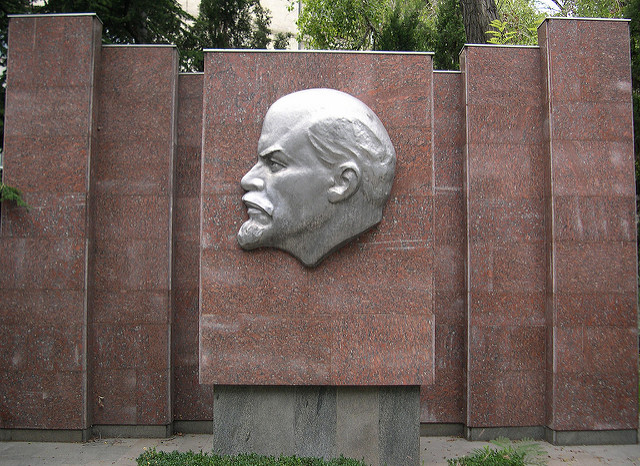If I had a dime for every time some knowledgeable pundit has declared Marxism to be dead, well, I could spend a lot less time writing about capital and a lot more time enjoying it. The frequency of assertions of the irrelevance of Marx’s work varies directly with periods of calm in the global economy such as the so-called Great Moderation of the quarter century before 2007. But then, capitalism being what it is (i.e. intrinsically unstable), the bust follows the boom and people once again start looking around for tools to understand economic crisis at a systemic level.
Thus, for instance, the late Christopher Hitchens, writing in The Atlantic in 2009, described the relationship between Marxism and capitalism as “symbiotic,” thus conceding (if in a very pompous sort of way) that while the latter persisted the former would also continue to be relevant. Some what more cogent (and infinitely less self-indulgent) was Louis Menand’s recent piece in The New Yorker in which he noted that “[i]ndustrial capitalism didn’t reverse [inequality] in the nineteenth century, and finance capital is not reversing it in the twenty-first.” The conditions that underpinned Marx’s relevance to his own century continue, and confirm his relevance to ours.
Approaching Capital can be a daunting prospect. As the centerpiece of Marx’s critical project, a thorough engagement with the text it is indispensable. Yet, as the sociologist Wolfgang Streeck noted in a recent talk, the first three chapters are completely unreadable. Interestingly, Streeck excludes the fourth chapter, the one dealing with money, which is probably the most incomprehensible of the lot, and which he, at least, has the advantage of reading in German (which is certainly much easier). One would be hard pressed to find a text for which a secondary guide was more needful. There have been a number published over the years, of which the currently best known is David Harvey’s, which takes the reader almost paragraph by paragraph through the text (and comes with a supporting website on which one can see him lecturing in almost precisely the same terms).
But the fine granularity of Harvey’s treatment can be difficult for those just coming to Marx’s work. And the specificity of his discussions means that one doesn’t quite get the wide sweep of Marx’s project that might illustrate its usefulness for more casual readers. For these purposes, there could hardly be a better text than Marx’s ‘Capital’ by University of London economists Ben Fine and Alfredo Saad-Filho. Originally published in 1975, the book has been periodically updated and reissued, with Pluto Press issuing a sixth edition late last year.
Marx’s ‘Capital’ has much to recommend it. The chapters are brief and thematically organized. They presuppose little or no prior knowledge on the part of the reader and the writing is as clear and concise as one could wish. It will come as no surprise to anyone reading this that the work of Karl Marx (and Capital in particular) has been the subject of much controversy over the years. Fine and Saad-Filho do a particularly good job of presenting the reader with what they need to know to understand the system, while also providing useful suggestions for further reading at the end of each chapter for those interested in delving further into particular topics.

Perhaps the book’s greatest virtue is that it presents Marx’s system in totality. This is key. The first volume of Capital is seldom read these days, the subsequent volumes even less so. There is much to be learned from Volume One, especially about the nature of surplus value, exploitation, and perhaps, if one were to read with particular thoroughness, something about the composition of capital. On this basis one would have a pretty good general idea of how capitalism works and of why Marx thought it was a bad thing. But without delving into the question of the Law of the Tendency of the Rate of Profit to Fall it is simply impossible to understand exactly why it is that Marx thought that capitalism could not persist forever.
One of the barriers to a general understanding of Marx’s critical project is the fact that the matter of the LTRPF only comes up for extensive discussion in Volume 3 of Capital. To get there, the most enterprising student has to work through the arid wasteland of Volume 2 with its painfully extensive discussions of circuits of production in departments 1 and 2. This is tough going even for those familiar with the minutiae of economic theory. Yet it is a barrier that must be crossed in order to get to Volume 3. There one finds material that is not only much more interesting and accessible but also the full working out of the connections between the composition of capital tendential fall of the rate of profit in the capitalist economy at large.
The most important virtue of Marx’s ‘Capital’ is that it makes this connection just about as clear as it can possibly be. Fine and Saad-Filho’s explanation is, in fact, considerably clearer than Marx’s, or (perhaps more accurately) than that which Engels constructed out of the notes and papers that Marx left behind when he died. A clear and thorough understanding of these matters is of particular importance in the current state of things given the role that technology is likely to play in the near future of industrial capitalism.
There has been a spate of stories in the mainstream media about the likelihood that robots and computers will replace most jobs now done by humans (this recent piece from the Guardian could stand in for many others). Although the political representatives of American populism have done their best to focus the attention of their constituents on the dangers to their livelihoods posed by off-shoring (or illegal immigration), the real danger comes from the prospect that those jobs will be automated out of existence. The likely systemic consequences of this transformation seem lost on most economists working in the neoclassical tradition. Marx’s work offers a much clearer view on what these consequences are likely to be, and for this reason alone (as well as many others) Marx’s ‘Capital’ has a valuable contribution to make.
In most respects, Marx’s ‘Capital’ avoids the more tendentious internecine debates within Marxism. The authors spend a relatively short but thorough chapter on the question of values and prices that is often referred to in the literature at the “transformation problem.” This is one of the most contentious issues in modern Marxist theory, and also one of the most abstruse. The authors have both done advanced work on this topic and this clearly have their own position on its solution. Still, they manage to explain the issues and why they are important in such a way that a reasonable person might find their way to a different approach. Similarly, while the authors have both collaborated with Costas Lapavitsas, one the most insightful Marxist analysts of financialization, their rendition of Marx’s approach to this topic provides entrance to, but is not merely a restatement of, Lapavitsas’s position.
Marx may not have gotten everything right. Capitalism has proven rather more flexible than I suspect he would have thought, and the flows of historical and economic change of such complexity as to overwhelm the ability of any system of thought to full comprehension. But Marx’s project retains much of its critical import, and his analysis of capitalism is a good a starting point for understanding current conditions as one is likely to find. Fine and Saad-Filho’s book continues to be a valuable point of entry to a complex yet supple framework for understanding the functioning of capitalism, as much so today as when it was first published.
Photographs courtesy of Joel Schalit.





